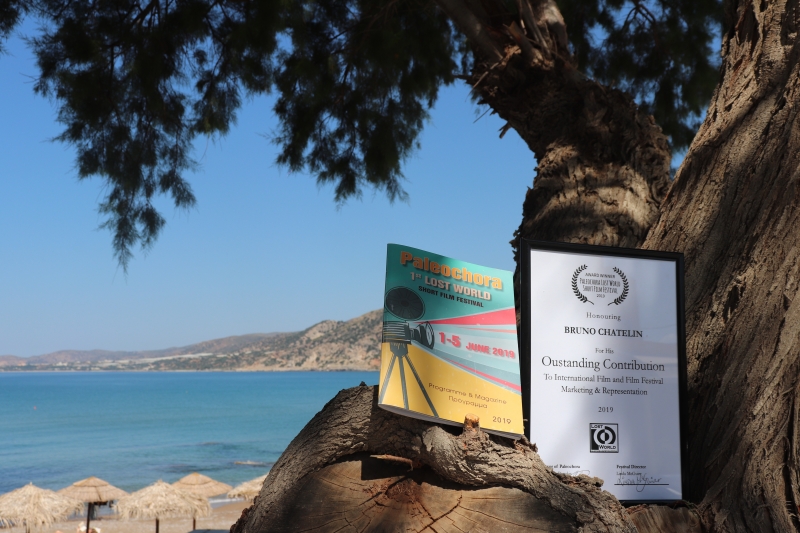For several years now India has been the second largest television market in the world and with more than 300 million viewers one of the world’s largest market for satellite television. Its box office receipts are growing at an annual rate of 20-25%. Her information technology sector is expanding thus enhancing existing new distribution platforms and developing new ones which in turn provide more space feature films. India’s film and television audience is young with about half of all viewers aged 35 years or less, yet underserved by the comparatively small number of film theatres. Since 70 percent of the film revenues come from metropolitan areas, bypassing most small towns and rural regions, there is ample room for expansion using new digital technologies. If indeed the government wires most of rural India within the next ten years to the internet the expansion will accelerate. This will be accompanied by a tremendous increase in the demand for content. Add to this the fact that more individuals take out subscriptions to cell phones services than their counterparts in China, leading to a constant enlargement of cell phone distribution platforms. Against this background the rapid expansion of the Indian media and information sectors is rather plausible.
The Kearney report, commissioned by the Confederation of Indian Industry and released during 2007 Goa Film Festival states that India has the world’s fastest growing media and entertainment sector in film and television. India’s film box office value is estimated to rise from $1.8 billion in 2006 to about $3.7 billion in 2011. The share of international revenue for Indian films will rise from 5% to about 15%. If income from Satellite and DVD rights is added, the international share could go up to 40%. Domestic expansion of the film industry is also driven by the growth of 200 broadcast channels, 70 million cable and satellite homes and four hundred million television viewers.
India produces more films than any other country. Currently about 1000 feature film are made in addition to the large number of documentaries and shorts including a growing number of independent productions with limited exposure to niche audiences. But according to an industry reports India’s film income generates only 1 – 2 % of the global film revenue.
Few dispute that India has arrived as a major world power. The country has been characterized for several years by economic growth rates of about eight percent, has a vast domestic market with a population exceeding 1.2 billion and experiences a rapidly increasing middle and upper middle class, larger than the entire U.S. population. This economic expansion has come about through internal dynamics, enlightened economic policies dating from the early nineties and entrepreneurial ingenuity. Thus India’s success is not due to massive foreign investments, a dependent integration into the global economy or massive ex[port earnings. To the contrary, India received in 2002 the second highest rating by the Global Entrepreneur Index and it ranked towards the bottom on the 2003 Globalization Index, scoring position 56 out of 62.
India seems globally integrated with respect to the provision of software services and could be characterized as the back office of the world’s corporations with its IT services export growing at annual rates of more than 30% as compared to China serving as the world’s back factory. On a different level, fast internet exchanges permit the outsourcing of digital animation to India, an industry that will gross one billion dollars in several years. Needless to add, software products and services add more value and generate higher profits. A country of contradictions and disparities India is a leader in software development and maintenance and has been exporting services and professionals with global software sales amounting to $10 billion in 2003. In spite of rapid economic growth India is still experiencing wide spread rural poverty, low productivity and stark class differences. In the media and information sector India has taken off whereas she lags behind in industrial and agricultural areas. And there are paradoxes. According to Raffiq Dossani most slum dwellers in Mumbai had cell phones, yet only one of 1400 people living there had access to a toilet.
Yet, ironically this success has a darker side since there are some severe gaps in the Indian film and media infrastructure. Compared to other major Western countries and Japan, India appears underserved insofar as the domestic visual media infrastructure is concerned. A listing by the British Council reveals that there are currently 13 film festivals in all of India compared to 25 film festivals held in New York City. For several of these Indian festivals the Council has no e-mail addresses; others do not show a website and the information posted on the websites is frequently rather limited. Thus it is difficult for foreign professionals to ascertain the track record of these festivals. Reports indicate that few individuals from Western Europe and the Americas attend these festivals. For journalists access to the festivals, specifically the Goa International Film Festival of India (run by public agencies) proved cumbersome, thus international press coverage was limited.
Though India has a rapidly developing film and media industry the trade exhibit inventory lists comparatively few trade shows specifically devoted to film and/or television, including the annual Big Picture Conference 2007 organized by the Confederation of Indian Industry (CII), the Broadcast & Film Expo in Hyderabad in December, the new Cinema Today show in Mumbai scheduled for early 2008, and the annual Summit on Entertainment and Media organized by the Ministry of Broadcasting and the Association of Chambers of Commerce. The scarcity of trade shows devoted to film and television is compounded by the small number of film festivals which could otherwise compensate for this absence by providing market and seminar services to the film trade. This contrasts with the frequent trade events professionals can attend in the U.S. and Western Europe. Whether or not this is due to a preference by Indian media professionals to participate in foreign trade events remains to be seen.
Another shortcoming in the Indian film infrastructure is the reported limitation of professional training for careers in film and television making since only a limited number of institutions provide such training. There are more film schools in Manhattan than there are in all of India. Given the rapid expansion of film productions in India and the stated goal of the central government to provide access to the internet to most of the Indian population during the next ten years there will be an explosive growth in the need for content, and this need can hardly be met by the graduates of film and television training programs in India. Further, the progressive professionalization of the Indian film industry requires the provision of skill sets in media marketing and media research currently not provided.
It remains to be seen if India can close these gaps. On a global level there is competition for the instructional staff needed to man several new film schools which are planned in the Middle East and Asia. Setting up new film festivals and trade event is a time consuming venture with stiff competition for international and domestic sponsors. And in India cooperation of public agencies is necessary for filling the gap which makes the endeavors in that direction more complicated. Yet obstacles may be overcome given the Indian spirit of enterprise and improvisation.
Adapted from a presentation by the author on ‘The Globalization of Indian Culture Through Film’ on December 19, 2007 at the New Delhi ‘Focus 2007’ summit on Entertainment and Media,.
Claus Mueller
New York Correspondent
filmexchange@gmail.com
 Chatelin Bruno
Chatelin Bruno 


























